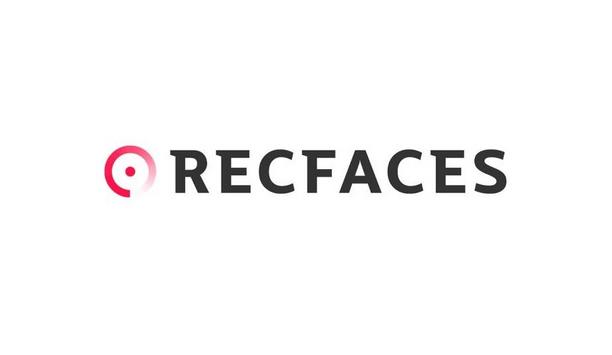4K or HD - the standard of video resolution in the security industry
Editor Introduction
The crystal clear images provided by new 4K cameras have attracted a lot of attention at recent industry trade shows in the security market. But the improved video resolution comes at a price. The cameras are more expensive, and the systems to support them – more bandwidth, more storage – portend even more expense. There have been higher-resolution cameras on the market for years, of course, but an advantage of 4K security cameras is that they represent a standard that could be applied industry-wide, much as HD has recently led a transition from standard (VGA) resolution. We asked our Expert Panellists: Is HD still the standard of resolution in the video market? For how much longer?
HD video remains the current standard of resolution in the video market, and new affordable solutions are only expanding its reach. Innovations in bandwidth compression are enabling IP and HD video to be housed on smaller networks typically found in small- to medium-sized businesses. Due to the greatly enhanced picture quality, ease of installation, and the fact that one HD camera can replace multiple analogue cameras; it is a great option for reliable security on a budget. The accessibility of HD video via smart phones and its prevalence in the consumer market create additional demand to deliver this quality for small businesses. While we are always working on next-generation solutions, we foresee HD video remaining a mainstream and affordable technology for the near future.
Today’s video security systems generally designate HD as 1080p, which is about 2MP. There are still some views that 720p is HD, but most users and systems integrators have moved to a minimum of 1080p because monitors that view the video support that level. There are some applications for 720p and 1.3MP cameras because the low-light performance can be better and the user may require higher frame rates. In our view, the more pixels delivered per camera, the better the economic value for the end user. A 1080p camera delivers more than 3x the pixels/dollar value of a VGA camera; and 3MP, 5MP, and 10MP cameras deliver even more compelling numbers. In the case of Arecont Vision, more than two-thirds of our sales volume is 3MP or higher. As end users and systems integrators look at value versus the cost per camera, faster movement is sure to happen beyond 1080/720p.
One of the biggest drivers in the shift from analogue to IP cameras was improved image quality, often represented by higher-resolution cameras. With the introduction of HDTV network cameras back in 2009, high resolution was easily understood because everyone expected to have a flat screen HDTV in their home with 720p or 1080p resolution, but more importantly, full frame rate and colour fidelity. In the security industry, you’ll predominantly find 5 megapixel cameras, but it can go up to 20 and 30 megapixel in some cases. The drawback is that many of those solutions have limitations in frame rate and generate too high bandwidths. Therefore, the 720p and 1080p HDTV remains dominant today and is expected to be for the foreseeable future. The next standards-based resolution will be 4K, which represents 8.3 megapixel, but first the industry will need to improve on bandwidth with better compression and better light sensitivity.
Currently in the IP video surveillance market, HD is very prevalent, but there are lots of cameras available that have gone beyond the HD standard. For example, there are 8MP (4K), and even cameras that go up to 30MP (7K). Additionally, specialty cameras, such as 360-degree fisheye cameras, can be 3, 5 or even 12MP, but can't be HD by definition since the images are not in a 16x9 aspect ratio. HD will continue to be the most widely used resolution in the near future for a number of reasons: higher resolution cameras are considerably more expensive; displays of higher resolutions, such as 4K, are still very expensive; and higher resolution video takes up much more bandwidth and storage. My prediction would be that in two years or so, we will start to see more widespread adoption of 4K in the mid- to high-end of the IP video market.
720p HD (1280x720) video will continue to be very popular with the entry-level low-cost cameras. However, Full 1080p HD (1920x1080) cameras are the new standard, and the cost for these 2MP cameras continues to fall. With the recent release of 4K cameras (3840 x 2160) from the major IP camera manufacturers, providing four times the resolution of Full 1080p HD, the trend of increased camera resolution continues.
The answer depends somewhat on what happens with prices of high-resolution cameras and monitors. We have all seen 4K or even 7K resolution cameras at trade shows, but the cost of these cameras and monitors – and the resulting problematic data volume – are fairly cost prohibitive. So, for now, HD remains the most commonly used high-resolution definition. It will be interesting to see which direction the security market takes in the coming year with processing, transferring, analysing and storing the large amounts of data generated by higher resolution technology. Service-based solutions are certainly gaining more traction as a result, shifting the focus from hardware to service and storage. Although the market at present isn’t ready to adopt a H.265 compression format due to serious licensing issues, it may be feasible a year from now. Once data can be compressed more efficiently, use of 4K and 7K will likely grow substantially.
HD became a standard because of the consumer market demand for HD televisions. HD digital video provides plenty of resolution to positively identify a person walking out a building door; whereas with analogue video such ID was often doubtful. More resolution is always better if you’re looking at a larger area and need the additional resolution to identify people and objects. For example, 4K is great for picking out specific people in crowded spaces. I think we’re reaching a point where we have the luxury of being able to pick the resolution that matches the desired application. However, increasing resolution does come with storage and networking costs, and we have to calculate the point of diminishing returns versus the overall security goals.
Editor Summary
Will 4K overshadow HD as the standard of video resolution in the security industry? The answer to that one question may well direct the course of the video surveillance market for the next decade. But one of our panelists warns: “Let’s not get ahead of ourselves; there are still a large number of users of analogue cameras that first need to make the transition to IP.” It’s a jarring reminder that the experiences of end users often lag far behind the expectations (and hopes?) of the manufacturer and integrator communities. The timeline beyond HD may well turn out to be longer than we think.
- Related categories
- CCTV cameras
- IP cameras














